Expedition 61
/Began Oct. 3, 2019; transitioned to Expedition 62 on Feb. 6, 2020
First Part
Transferred from Expedition 60
Luca Parmitano, ESA
| Commander
Aleksandr Skvortsov, Roscosmos
| Flight Engineer
Christina Koch*, NASA
| Flight Engineer
Launched: July 20, 2019, aboard Soyuz MS-13
Landed: Feb. 6, 2020
Second Part
Docked Sept. 25, 2019
Oleg Skripochka, Roscosmos
| Flight Engineer
Jessica Meir, NASA
| Flight Engineer
Drew Morgan**, NASA
| Flight Engineer
Launched: Sept. 25, 2019, aboard Soyuz MS-15
Expected landing: April 17, 2020
* Koch flew into space March 14, 2019, aboard Soyuz MS-12 and landed with the Soyuz MS-13 crew in February 2020.
** Morgan flew into space July 20, 2019, aboard Soyuz MS-13 and should land with the Soyuz MS-15 crew in April 2020.

— Statistics —
Max. crew size: 6
Started: Oct. 3, 2019
Expected ending: Feb. 6, 2020
Expected duration: ~127 days
Orbits of Earth expected: ~2,000
Launch site: Baikonur Cosmodrome, Kazakhstan
Spacecraft: Soyuz-MS-13, Soyuz MS-15
Spacewalks: 9
Total spacewalk time: 61 hours, 0 minutes
Visiting vehicle arrivals: 3
Visiting vehicle departures: 4
— Mission Summary —
In addition to the dozens of science experiments expected to be performed, the crew of Expedition 61 performed nearly a dozen spacewalks to upgrade and repair the outpost. These included several to replace batteries on the P6 truss segment as well as repair work on the Alpha Magnetic Spectrometer physics experiment located on the S3 truss segment.
— Major Events —
Expedition 61 begins
After experiencing a temporary population boost to nine people, the crew of the International Space Station returned to six people following the departure of Soyuz MS-12 with Russian cosmonaut Aleksey Ovchinin, NASA astronaut Nick Hague and United Arab Emirates astronaut Hazza Al Mansouri. Upon their departure at 07:37 UTC Oct. 3, 2019, Expedition 61 formally began.
Expedition 61 consists of ISS commander and Italian astronaut Luca Parmitano as well as flight engineers Aleksandr Skvortsov and Oleg Skripochka of Roscosmos; and Andrew Morgan, Jessica Meir and Christina Koch of NASA.
US EVA-56
Just a few days later, Koch and Morgan donned spacesuits to perform the first of what was planned to be five spacewalks dedicated to replacing batteries on the P6 truss segment.
This outing, dubbed U.S. EVA-56, officially started at 11:39 UTC Oct. 6, 2019, when the two astronauts switched their suits to battery power before exiting the Quest airlock. Koch, the lead spacewalker, wore the suit with red stripes while Morgan wore the one with no stripes.

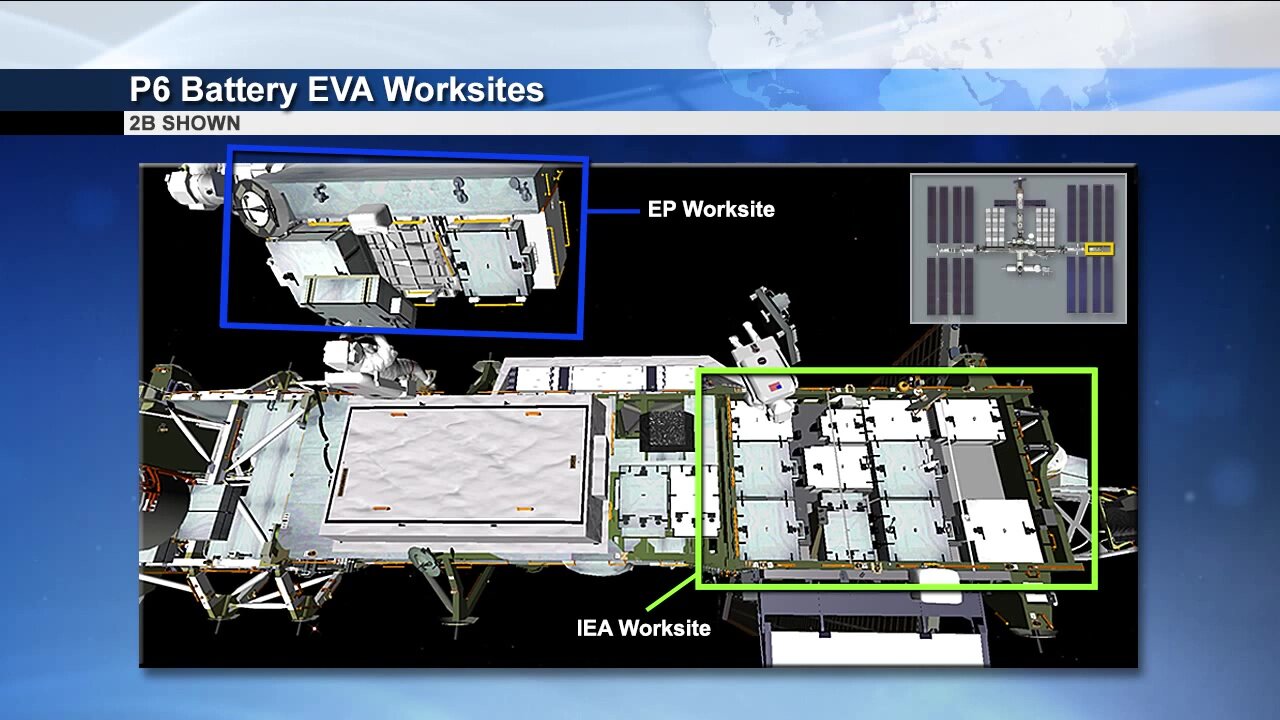
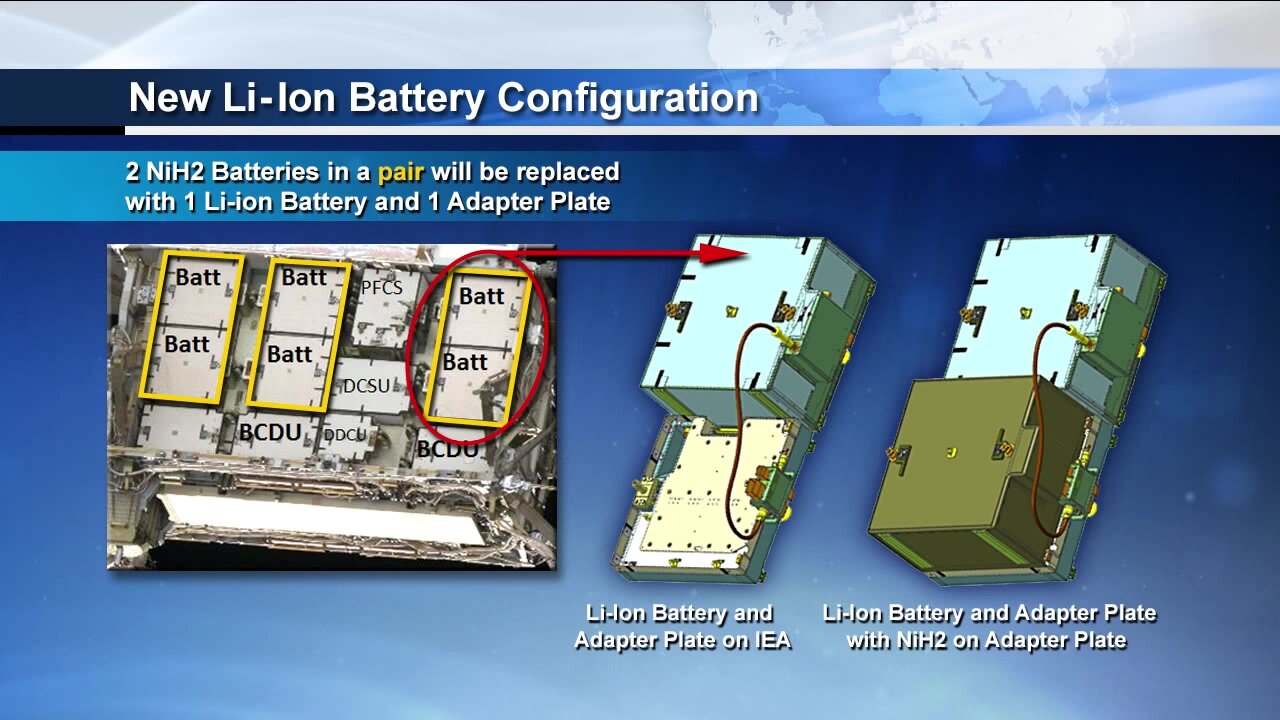
For this spacewalk, the goal was to replace two nickel-hydrogen batteries on channel 2B on the P6 truss with a single lithium-ion unit and a battery adapter plate.
Despite being twice as efficient, the batteries are still large with each being nearly 200 kilograms.
The six new batteries and their adapter plates were brought to the outpost via the Kounotori 8 spacecraft, which launched to the ISS in late September. They were stored on the cargo ship’s Exposed Pallet inside its unpressurized logistics carrier.
Once berthed to the ISS, the pallet was extracted via the 17.6-meter-long Canadarm2 before being positioned as close to the P6 truss as possible.
This is the third spacewalk series dedicated to replacing the outpost’s old nickel-hydrogen batteries. The first two sets occurred in January 2017 and March 2019 and both included two EVAs focusing on the S4 and P4 power channels respectively.
The astronauts swiftly completed their primary objectives less than five hours into the planned 6.5-hour spacewalk. As such, they were able to perform several get-ahead tasks. The EVA officially needed after 7 hours and 1 minute.
US EVA-57
The second outing in this spacewalk series occurred at 11:38 UTC Oct. 11 and lasted for 6 hours, 45 minutes. While Koch and Morgan also performed this EVA, they switched roles as the lead spacewalker.
For this spacewalk, the duo were tasked with finishing the battery replacement on the 2B channel before working on several other get-ahead tasks.
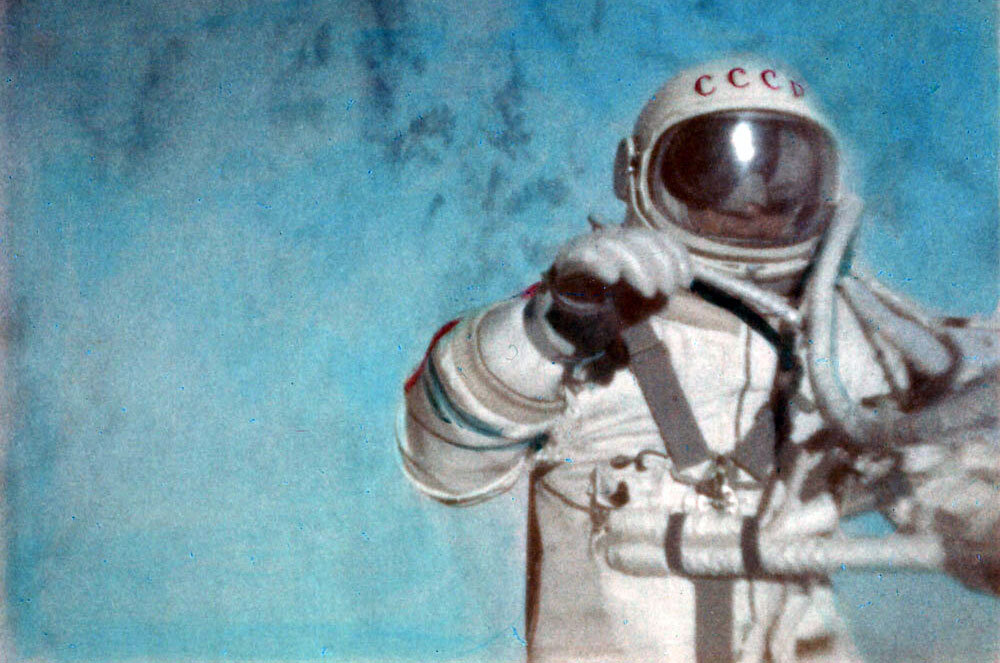

Just before the spacewalk began, the crew was notified by Moscow mission control that cosmonaut legend Alexei Leonov had died at the age of 85. In 1965, Leonov became the first person to perform an EVA.
Leonov was also the commander of the Soyuz spacecraft during the 1975 Apollo-Soyuz Test Project — marking the beginning of international cooperation in space.
Once Koch and Morgan finished their spacewalk, several ISS crew members gave their thoughts about the famed cosmonaut.
"As the 1st human to walk in space on March 18, 1965 and the commander of the Soyuz spacecraft 10 years later that gave birth to the human spaceflight cooperation that thrives today, and that we cherish on the International Space Station, Leonov was a pathfinder and pioneer in human spaceflight," Meir said to mission control via her spacesuit as the spacewalk was ending.
US EVA-58 — The first all-female spacewalk
Not long after the previous spacewalk, a battery charge/discharge unit, or BCDU, on the P6 truss segment had failed. This device regulates the direction of power from the batteries and needed to be replaced before any new battery installation could continue.
Koch and Meir were tasked with performing this spacewalk, which started at 11:38 UTC Oct. 18. It was the first time two women ventured outside a spacecraft at the same time. They worked together to remove the failed BCDU, which had been at the outpost for 19 years, and swapped it with a spare.
The failed BCDU was brought back inside the ISS and is expected to be returned to Earth inside a future SpaceX Dragon mission.
The spacewalk was also used to perform several other tasks, including the installation of a stanchion on the European Columbus module to prepare for an external platform to be installed there sometime next year.
In total, this spacewalk lasted for 7 hours, 17 minutes and was the 221st performed in support of ISS assembly and maintenance.
The three originally-planned spacewalks to finish the installation of the P6 truss batteries have been put on hold, likely until after the five spacewalk planned to repair the Alpha Magnetic Spectrometer, which are anticipated to occur in November and December.
Kounotori 8 departure
Following its roughly 5-week stay at the ISS, the Japanese cargo spacecraft Kounotori 8 was unberthed from the Earth-facing port of the Harmony module. The spacecraft delivered some 5,000 kilograms of supplies and equipment when it arrived on Sept. 28.
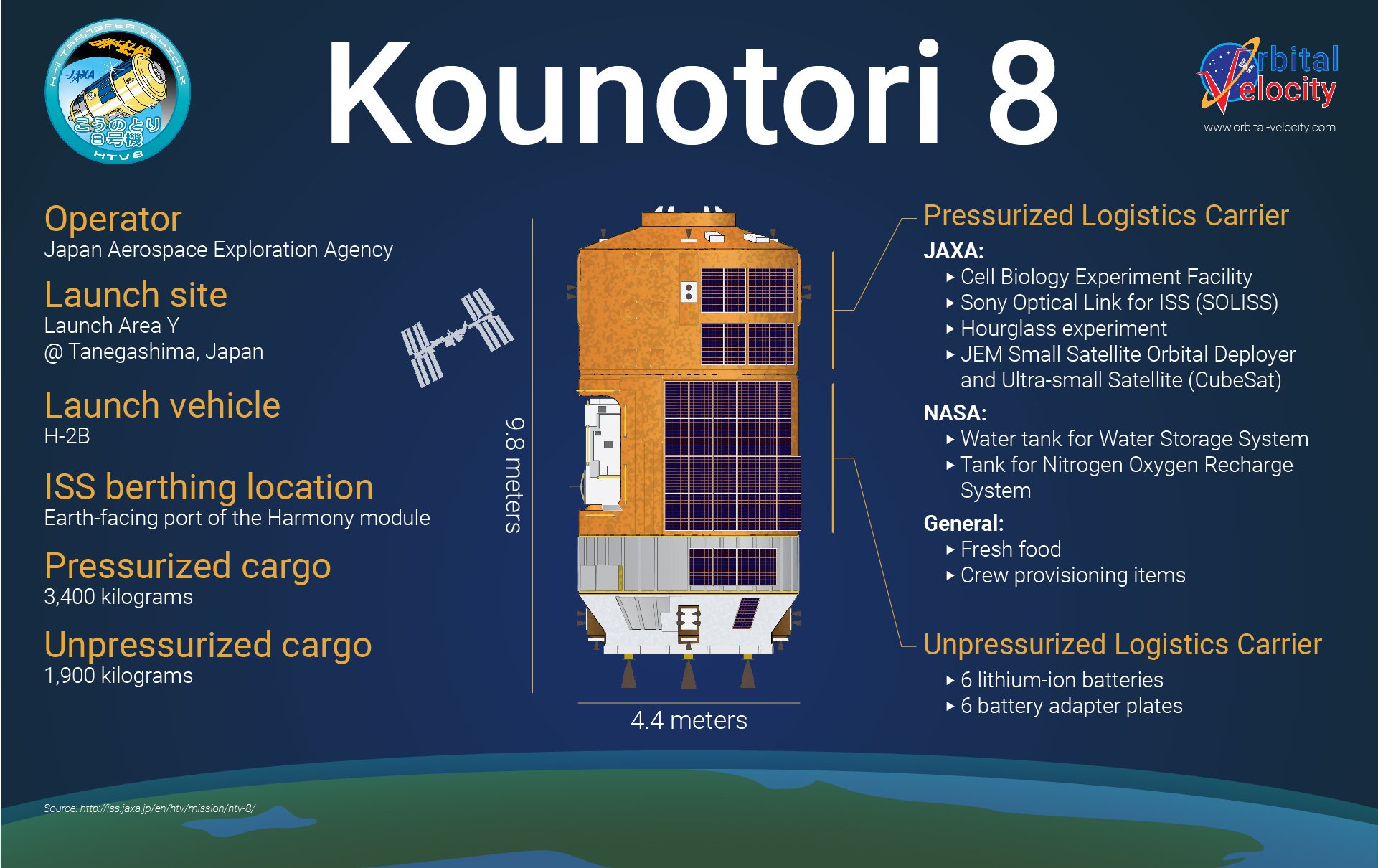

Inside the Kounotori 8’s Unpressurized Logistics Carrier was an external pallet with six lithium-ion batteries. That was removed and attached to a temporary storage location on the station’s external truss.
After that, another external pallet, which was left at the outpost by Kounotori 7 last year, was loaded inside Kounotori 8.
The Kounotori 7 pallet had nine old nickel-hydrogen batteries on it from a series of spacewalk performed earlier this year to replace batteries on the S4 truss segment.
In the meantime, the cargo in the Pressurized Logistics Carrier was unloaded and dispersed throughout the ISS before being reloaded with trash and unneeded equipment.
At 17:21 UTC Nov. 1, Kounotori 8 was unberthed and released before it safely departed the area around the outpost. Several hours later, it performed a deorbit burn to allow the spacecraft to fall back to Earth, burning up in the atmosphere over the Pacific Ocean.
NG-12 Cygnus arrival
The next day, at 13:59 UTC Nov. 2, Northrop Grumman launched its NG-12 Cygnus spacecraft atop the company’s Antares 230+ rocket. Liftoff occurred at the Mid-Atlantic Regional Spaceport’s Pad 0A at Wallops Island, Virginia.
The rocket deployed NG-12 Cygnus, which was named the SS Alan Bean after the late Apollo 12 Lunar Module Pilot, about 9 minutes later for it to begin a 2-day chase of the International Space Station.

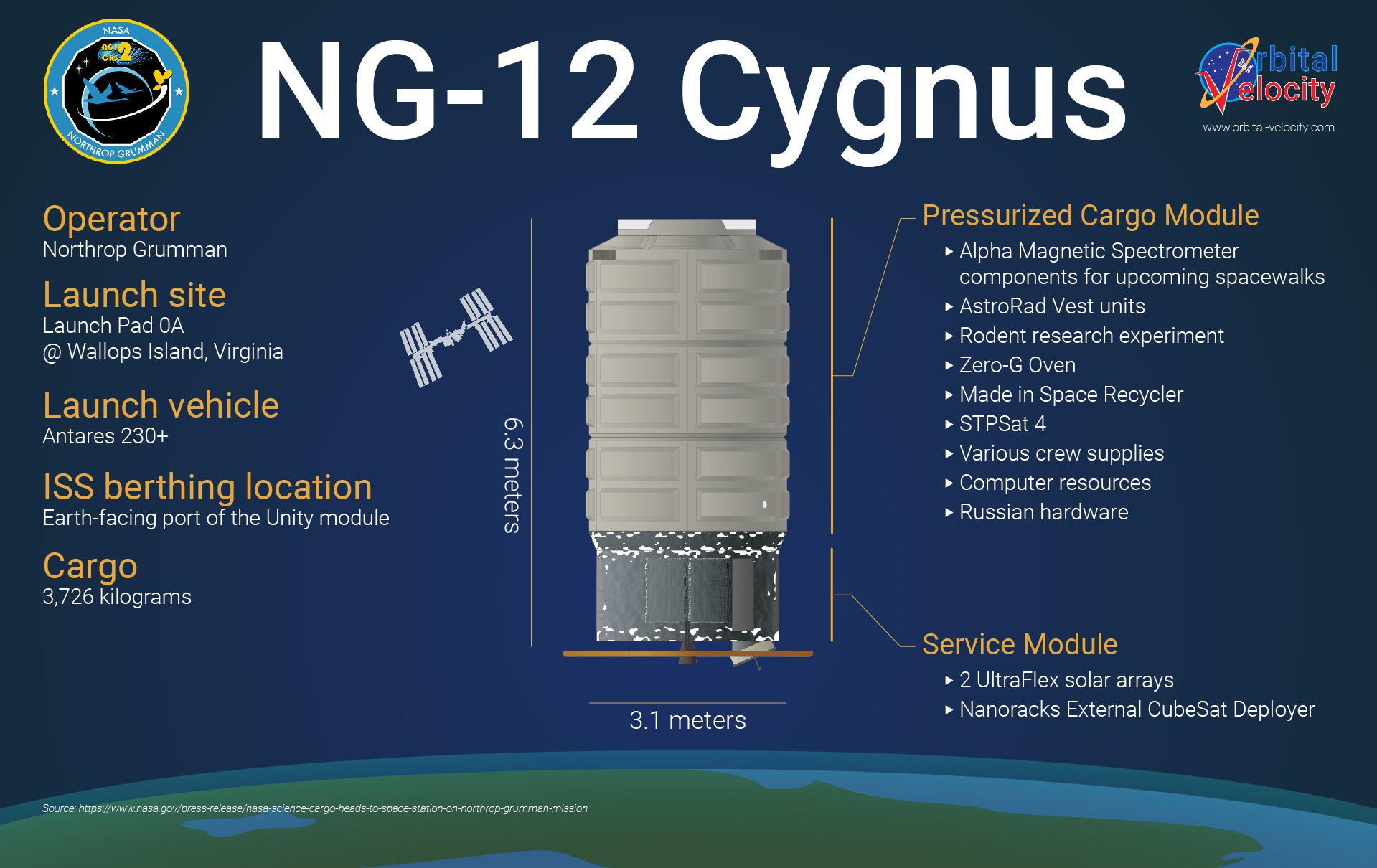

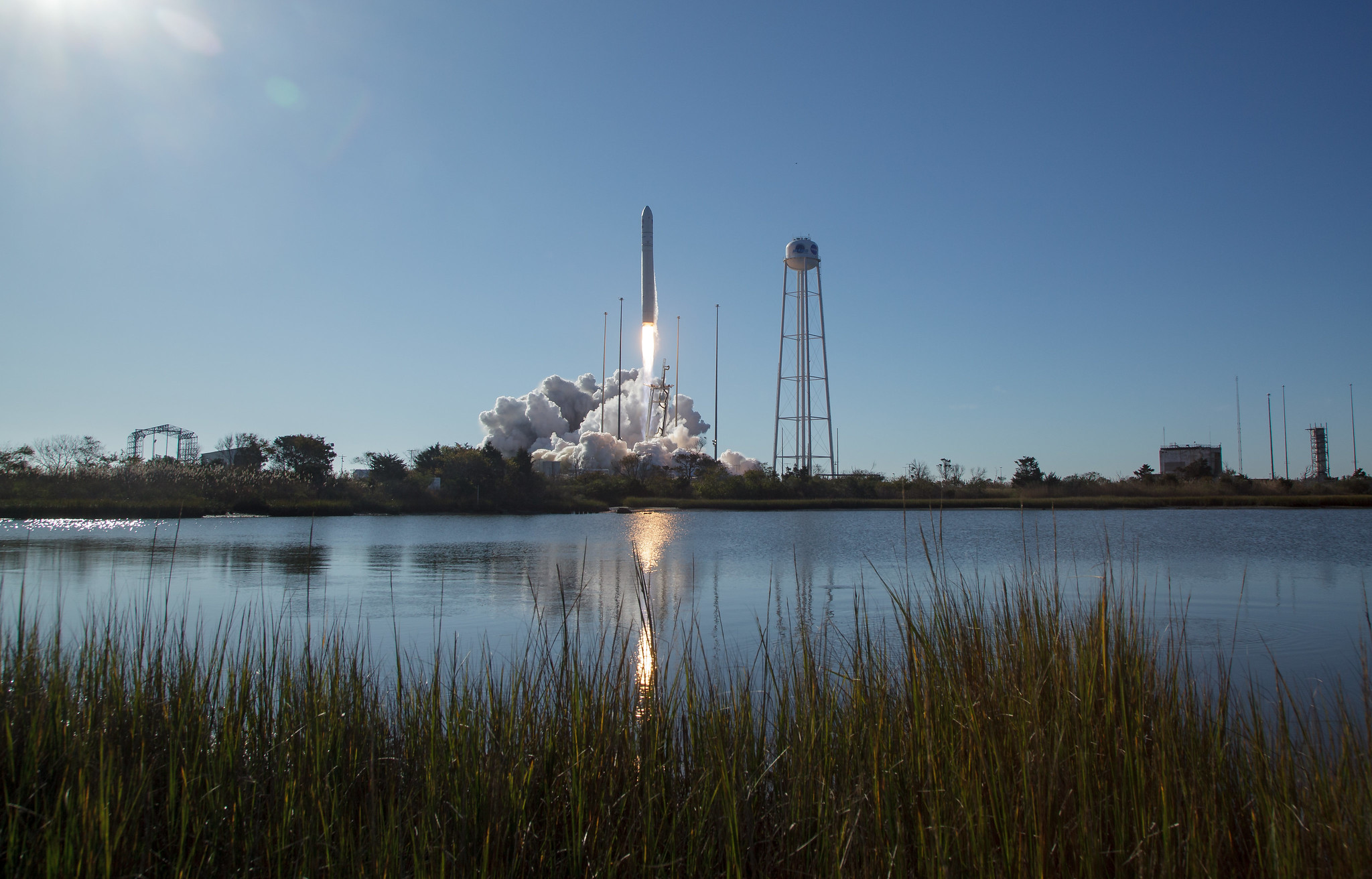
On Nov. 4, the spacecraft rendezvoused with the ISS and was captured by the Canadarm2 remote manipulator system. Several hours later, it was berthed to the Earth-facing port of the Unity module at 11:21 UTC.
Aboard this spacecraft is roughly 3,700 kilograms of science and supplies. Among the cargo is the AstroRad Vest, which could be used to help protect astronauts from radiation caused by solar particle events while in deep space, according to NASA. These units will be worn aboard the ISS for astronauts to provide input on the vests as they perform their daily tasks.
Additionally, the outside of this Cygnus differed from previous spacecraft in that it was outfitted with fixtures to hold various external objects from the ISS that are in need of disposal. Currently, only SpaceX’s Dragon and Japan’s Kounotori spacecraft are able to dispose of large pieces of station hardware.
Additionally, it appears several new panels were added to the outside of spacecraft. While not confirmed by Northrop Grumman, these could be radiators being tested for use on the Habitation and Logistics Outpost the company is expected to build for NASA to be the second element of the Artemis program’s Lunar Gateway.


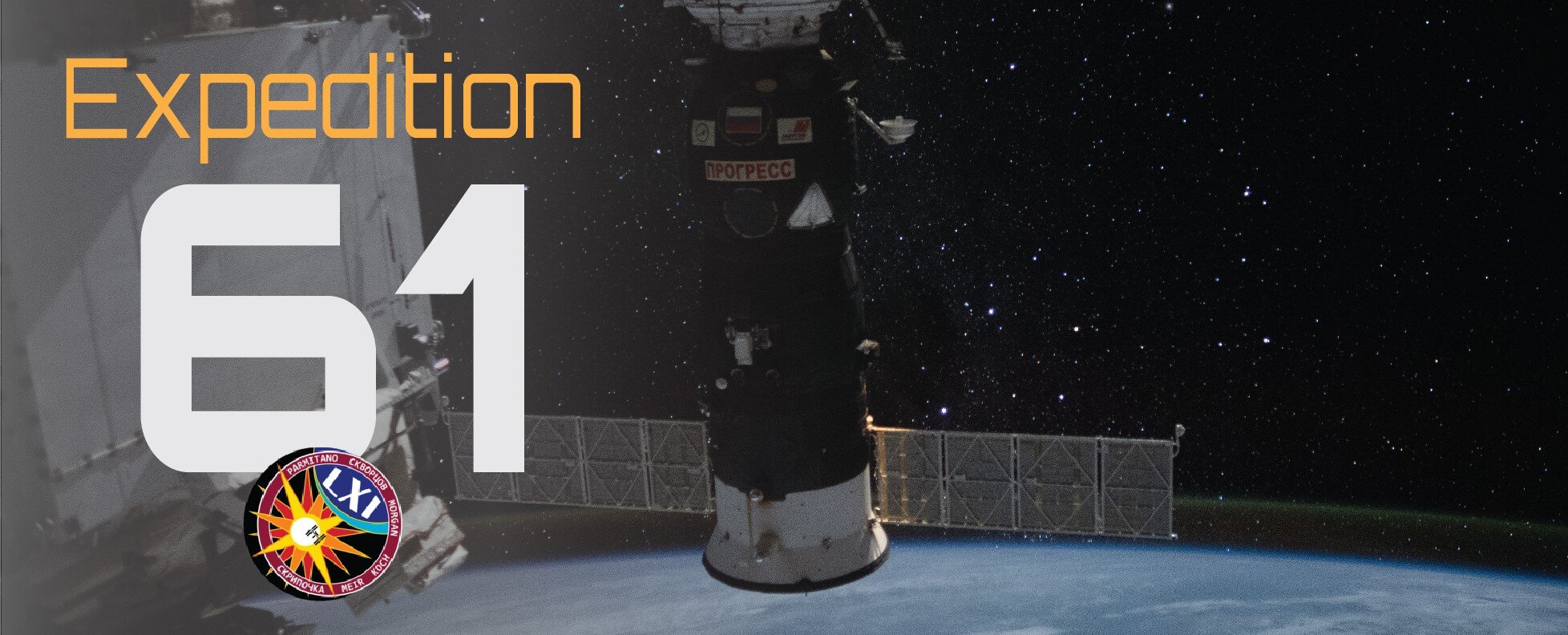

















NASA astronaut Christina Koch, along with European Space Agency astronaut Luca Parmitano and Russian cosmonaut Aleksandr Skvortsov, returned to Earth after a record-breaking stay aboard the International Space Station.